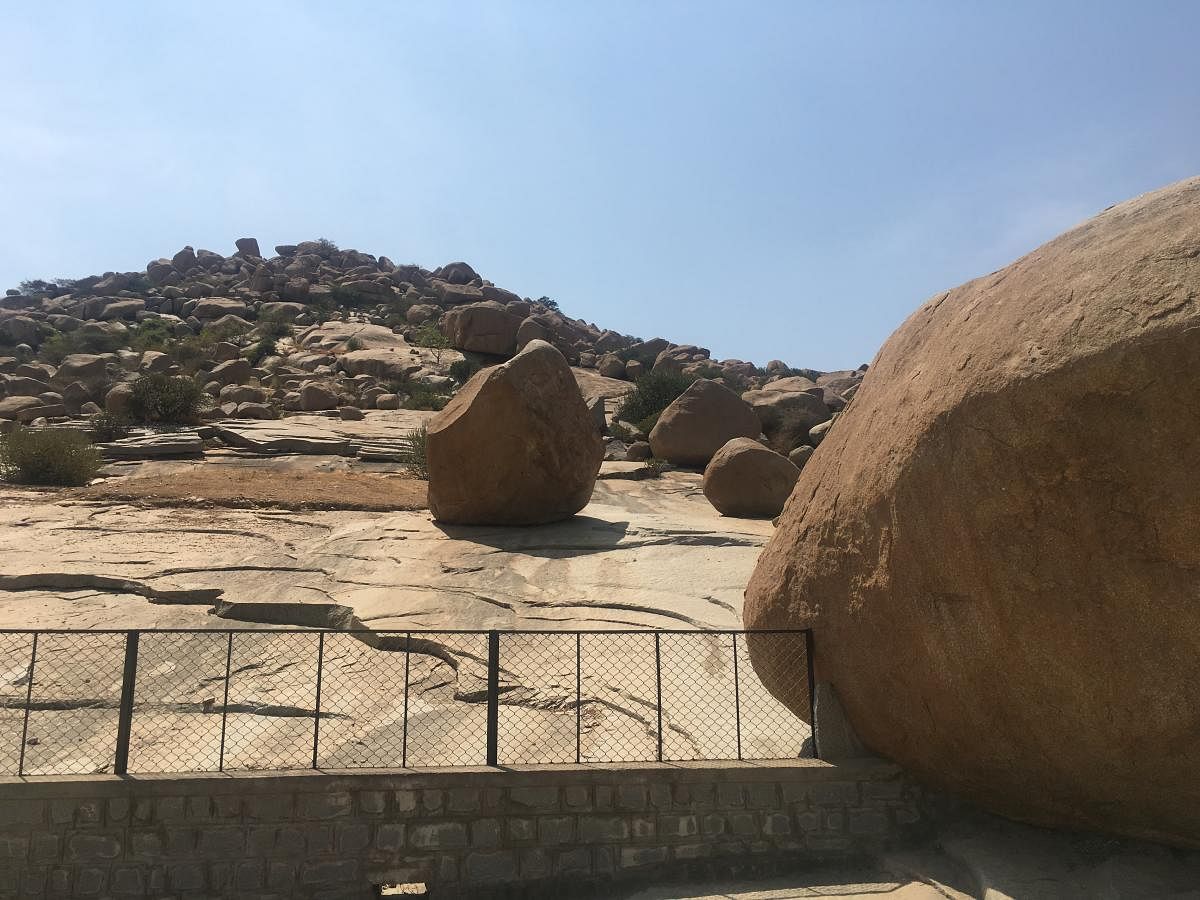

Brahmagiri is a nondescript village located at the base of the Brahmagiri hills, on the Chitradurga-Ballari highway, about 40 km away from Ballari. Driving down from Ballari, you have to take a turn to the left after Rampura, on to a narrow road which will take you there. This road traverses through an undulating terrain of extremely dry rocky fields, adjacent to a dry river bed with an array of brownish hillocks on the horizon.
Brahmagiri has its name and details engraved in the annals of history as an important archaeological site due to the existence of a historical rock edict of Emperor Ashoka known locally as Ashoka Shilashasan, a few prehistoric burial sites, and several Neolithic and Megalithic artefacts collected from the locale during excavations by the Archaeological Survey of India (ASI) in 1891.
Habitation site
The place is also known as Ashoka Siddapura, which, according to historians, was the southernmost border of Ashoka’s empire. Known as Isila, this was the headquarters of the then rulers, the Mahamatras of Suvarnagiri. A habitation site was discovered here and excavations revealed and recognised five distinct cultural strata: Microlithic, Neolithic, Iron Age, Mauryan and Chalukya-Hoysala.
The rock edict is inside a protective fence on the roadside, on a massive rocky surface of about 10’x14’ located about twenty feet above ground level. The inscriptions date back to 272-232 BCE as per ASI records and convey the message of peace and tolerance. It is inscribed in Prakrit language using Brahmi script. A canopy and grilled enclosure have been erected around the edict to safeguard it from the elements. A narrow winding staircase goes all the way to the top. Below the structure, we find two display boards, one detailing the inscriptions in Prakrit language and the other its transliteration in English.
The edict describes in brief Ashoka’s views on dharma (norms of ethical and moral conduct), an earliest attempt to solve some of the problems that a complex society faced. The dharma preached by Ashoka is explained by historians in terms of moral precepts, based on the doing of good deeds, respect for others, generosity and purity.
The essence of the edict is given below: “Obedience must be rendered to mother and father, likewise to elders; firmness (of compassion) must be shown towards animals; the truth must be spoken; these same moral virtues must be practised. In the same way, the pupil must show reverence to the master, and one must behave in a suitable manner towards relatives. This is an ancient rule, and this conduces to long life. Thus one must act.”
In the inscription, Ashoka refers to himself as Devanampriya Priyadasi Ashokaraja, meaning ‘Beloved of the Gods’. Ashoka wished that “the glory of dharma will increase throughout the world, and it will be endorsed in the form of mercy, charity, truthfulness, purity, gentleness and virtue.” According to historian
K A Nilakanta Sastri, Ashoka had advocated restraint in the number of animals that had to be killed for human consumption, protected some of them, and in general condemned violent acts against animals.
Historians have opined that the probable reason for locating the edict here was with the intention of spreading Ashoka’s ideals beyond the borders of the Mauryan Empire. The inscriptions make us cognisant of the relevance of dharma’s norms in today’s educationally, technically and economically advanced society.
Just beyond the fencing of the rock edict, a kutcha road takes you through abandoned fields to the pre-
historic burial sites. Several graves are found here, all decorated with small granite stones placed in a ring format around them. As per ASI records, Brahmagiri was identified to contain a mortuary of 300 tombs with burials made in rectangular cists, cist-circles (stones surrounding granite cists) and pit-circles. The cists also included artefacts like vessels with graffiti, stone beads and iron and copper tools. Two kinds of burial practices have been identified at this site: infants with folded limbs in urn burial and adults stretched out in inhumation burial in stone cists. The graves have been dated by archaeologists as belonging to Neolithic as well as Megalithic periods.
How different our planet would be if such a behavioural change manifests itself in our society.